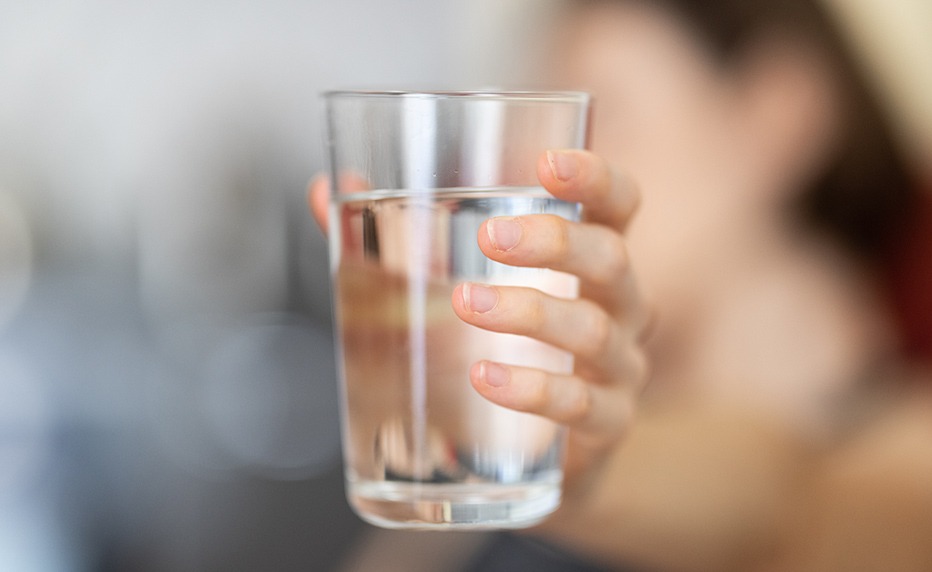
This question is often asked by parents. A young child with Down’s syndrome may seem uninterested in water. They may not drink much, drink very small quantities or even refuse water. What should we do?
Getting a young child with Down’s syndrome to drink water is no easy task. Many of them categorically refuse to swallow water, whatever subterfuges their attentive parents devise to help them.
Testimonials abound from parents expressing distress at their Down’s syndrome carrier child’s refusal to drink water: “my 8 ½ year old son can go a whole day without drinking water and without asking for any. When he was a baby, I had a lot of trouble getting him to drink water: he would refuse, spit it out… Today, I still sometimes have to go around the water. He likes to drink several bowls of milk in the morning, and I ask him to finish a glass of water at every meal, but he still sometimes refuses outright. He likes to drink soup and orange juice and accepts – with difficulty – raw vegetables (cucumber, tomato), except for melon in summer. So I play on his preferences: soups in winter, melon in summer, with no restrictions. I’ve also noticed that he swallows water from a glass while brushing his teeth, and is more willing to drink from a gourd.“
Why is it so difficult for children with Down’s syndrome to drink water? Could it be the taste? Consistency in the mouth? Difficulty swallowing? Does swallowing cause discomfort or pain?
Young children with Down’s syndrome may present particular swallowing difficulties: difficulty in mobilizing the tongue and therefore in propelling and controlling liquids, delay in triggering the swallowing reflex.
There may also be sucking difficulties, such as a tongue frenulum that is too short, which are not particularly linked to trisomy 21, but occur in some young children. Trisomy 21 can also lead to a lack of sensitivity in the oral sphere. Water, tasteless, odorless and at room temperature, does not provide sufficient information, making it difficult to control and swallow, leading to a forward leak, or conversely, a false-route.
Desensitization can be achieved by stimulating the inside and outside of the mouth, massaging (see our suggestion here) and playing games.
The child’s daily water requirements
A child with Down’s syndrome, like any other child, needs water to stay hydrated! Water is not digested but directly absorbed by the stomach wall, so it instantly hydrates the body.
All other drinks contain substances that have to be digested or accumulate in the body. What’s more, most of these substances are not very good for your health, notably because of the sugar contained in juices, syrups, soft drinks, etc.
So how do you help a child with Down’s syndrome learn to drink water?
You may have the impression that your child drinks little water. In reality, he may still be drinking a lot of milk, or eating a diet rich in water. This meets part of his water requirements.
It’s normal for children to take small sips! It’s rare for children to drink large glasses of water all at once. But drinking often, and in small sips, is the best way to stay hydrated. If your child has little interest in water, accept that he or she drinks little, but offer water often – it can work!
As your child gets older, it’s better to offer him a glass rather than a bottle, so that the neural maturation of the mouth can take place and the tongue can find its place in the mouth, paving the way for good articulation. You can start by offering to drink from a straw, with an anti-reflux straw that’s easier to reach than the traditional straw, or by finding glasses that are easier to handle, such as those with handles or spouts.
In conclusion
Children with Down’s Syndrome can take a long time to get used to eating: months, years, every child is different. We sometimes have to be cunning, gentle and come up with solutions: keeping a bottle that the child likes and opening the teat, giving water drop by drop, through a straw, with a Doliprane syringe, with a spoon… until the child assimilates it in the mouth…
Jellied water can also be a good alternative, helping to avoid false routes while waiting for the muscular tone of the oral sphere to strengthen.

Sign up to receive our newsletter and stay informed of new content!
Your registration has been taken into account